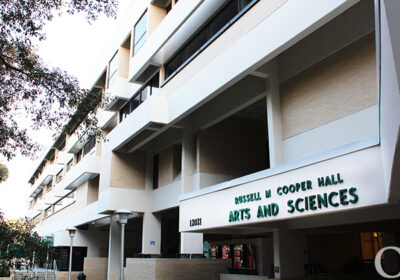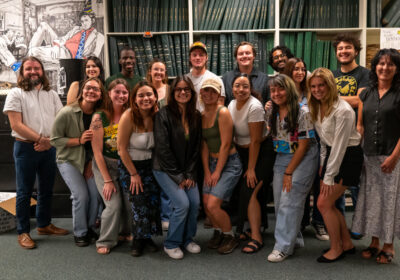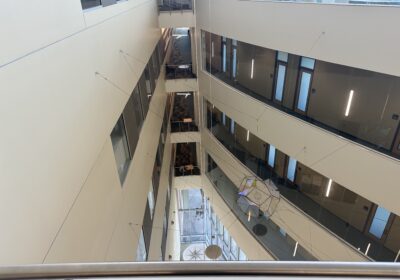USF follows up on absence of US flags in classrooms
When College of Business professors Marvin Karlins and Robert Welker attended a United Faculty of Florida union meeting held in a classroom in the College of Education (COE) building early in the fall semester, they noticed a few items were missing.
“The room we were in didn’t have a flag,” said Karlins, who is a management professor. “During one of the breaks (Welker and I) walked around and we looked in 16 classrooms and there were just no flags. That’s pretty substantial.”
Once they noticed that the building was in violation of Florida Statute 1000.06, which states that all public classrooms must display American flags, they informed University Audit and Compliance by submitting a notice of violation on Sept. 10.
About a month later, their notice has put a dent in the number of classrooms that were in violation. However, more may still exist.
“How slow are they going to be (to respond)?” said Welker., who teaches accounting.
University spokesman Michael Hoad said USF began addressing their notice as soon as it was reported.
“The Physical Plant says they replaced the missing flags in the College of Education,” Hoad said, and the University is “still checking to see how many other classrooms (in other colleges) may be missing (American flags).”
Karlins said at least 16 classrooms in the COE were missing flags.
“We are required as faculty to report ethical and legal violations,” Karlins said. “Just as the same way if I saw a student assaulted, I’d report it.”
The violated statute states that “each public K-20 educational institution that is provided or authorized by the Constitution and laws of Florida shall display daily in each classroom the flag of the United States. The flag must be made in the United States, must be at least 2 feet by 3 feet, and must be properly displayed in accordance with Title 4 U.S.C. Each educational institution shall acquire the necessary number of flags to implement the provisions of this subsection.”
Despite the amount of time it takes to install each flag, what will take more time is finding the appropriate flag to display, Welker said.
“There are restrictions. It can’t be any old flag,” Welker said. “(The University) has to find flags that are two feet by three feet that are made in the United States.”
The statute not only gives specific guidelines for the type of flags that must be bought and displayed, but also explains how the flags must be funded.
“The principal, director or president of each educational institution shall attempt to acquire the flags through donations or fundraising for one year prior to securing other funding sources or allocating funds for the purchase of flags,” the statute states.
Hoad said the University will cover the cost of the flags. However, school officials are still unsure of how much will be allocated toward the project because the number of classrooms without flags is unknown.
“We simply put them in at (the University’s expense), and were happy to do it,” he said.
Welker said he doesn’t doubt the flags will be replaced, possibly with the University’s “$285 million of unrestricted cash access,” and does not blame the students and COE staff for the oversight.
“Who knows if the teachers knew about the law,” he said.
The professor’s notice did not specify a deadline for the flags to be displayed, but Karlins said the change should happen as soon as possible.
“I assume it will be a matter of months,” he said. “I want to make sure that by the end of (2010) this is finished.”
As Karlins and Welker said they will continue to monitor the actions of the University, students have also expressed curiosity in the flags.
Vincent Ricottilli, a junior majoring in humanities, said he agreed with Karlin’s suggested deadline and wondered how high of a priority the University has placed on the flags.
“(American flags) are just something I always assume are there,” he said. “I don’t think an end of the school year deadline is unreasonable at all. I think it’s more important for the school to make an active commitment if they haven’t already.”
Regardless of the amount of time it takes to install the flags, Karlins said his main concern is that the University portrays a message of patriotism.
“I think it’s important that we show ourselves off as being a good patriotic school,” he said.







